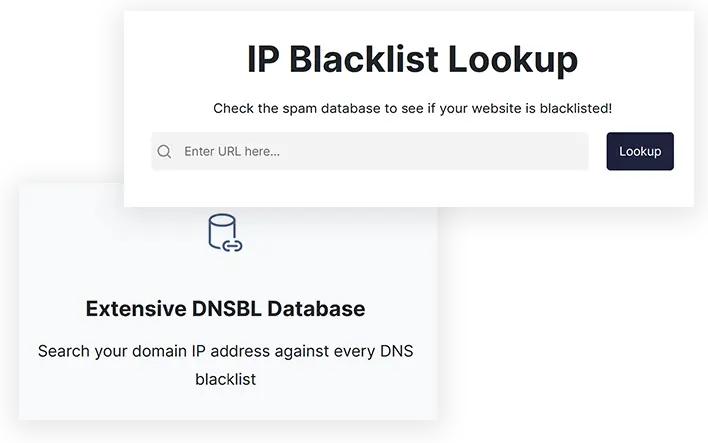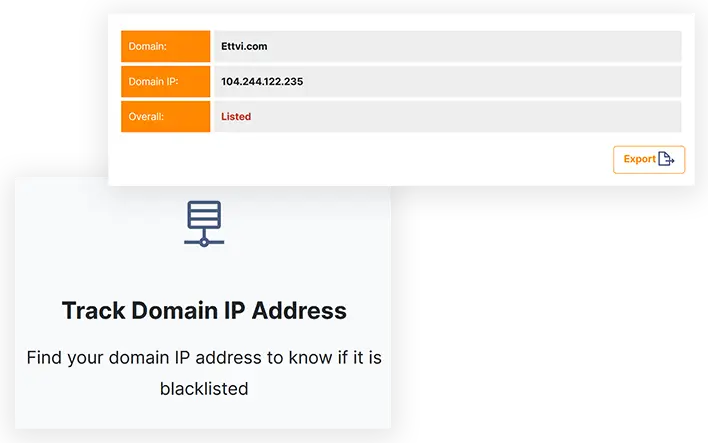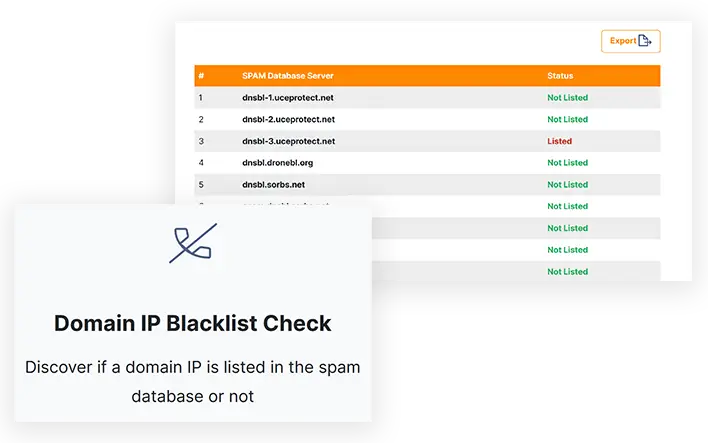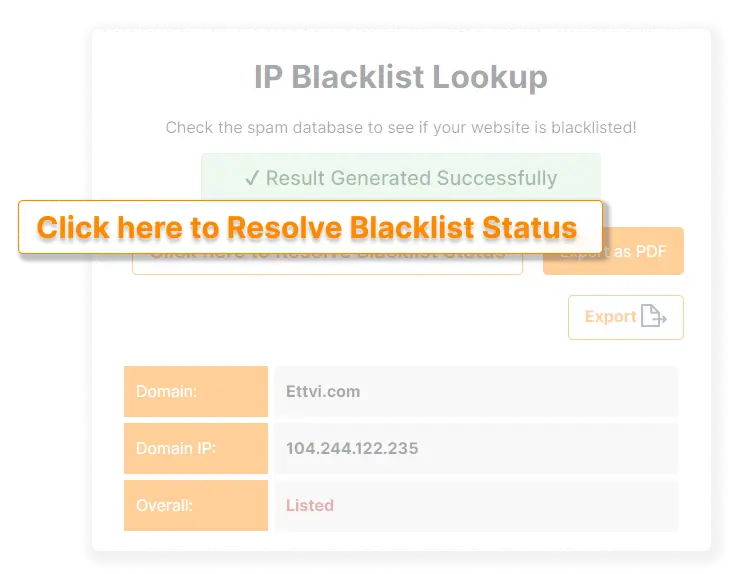Understanding IP Blacklist lookup tool
What is DNSBL?
It is well recognized that DNSBL's, or Domain Name System Blacklists, are blocking lists of spam and spam-like messages that allow website owners to block messages that have a history of sending spam. There are those that prefer the term blacklists and those that prefer the term block lists. These lists are generated using the Domain Name System, or DNS, which is a key building block of the Internet. Therefore, domain names are translated from complicated, numerical IP addresses, allowing for easier reading, searching, and usage of the lists.
These blacklists generally contain IP addresses of e-mail servers from which blacklist software maintainers have previously received spam of some kind. Blacklisting means all messages from that server are flagged or rejected by all websites using a specific blacklist. There are numerous such lists available on the internet, and they all have different criteria for compilation. There may be certain lists that perform better than others, making some list administrators more trustworthy and respected.
In the past, DNSBLs were known as RBLs, so sometimes people still refer to them when referencing spam blocking. The terms RBL and DNSBL are usually used interchangeably.
Importance of Using a Blacklist Lookup tool
The first use of domain blacklist checks was to block email. In the modern e-mail service, most email clients have either built-in or add-on DNSBL support. With this method, a server administrator can use a particular DNSBL to block all emails from specific domains and websites listed on it. A user might choose this option as a way of minimizing the amount of spam they receive.
There is a possibility that your spam score might be increased by some time if you've been added to a spam blacklist that also appears in a spam scoring system. As a result of that as well as other scoring tests, the email might be discarded or redirected to the spam folder if the score exceeds a certain threshold.
How does a blacklisting of an IP address happen?
A blacklist consists of a list of IP addresses suspected of sending unsolicited email messages. In order to prevent email from being delivered to these IP addresses, the sender is either blocked or their email is routed to a spam folder or otherwise disposed of. A single blacklist or a number of backlists may contain your IP address. This information does not appear to be centralized by any authority. It should be noted that each blacklist is independently managed, and each lists or delists IP addresses according to its own criteria.
Your IP address may be on the blacklist for several reasons.
A virus, malware, or sending a lot of spam emails are the primary reasons for IP blacklisting.
In the event that your mail server is not configured properly, potentially resulting in spam being sent, or if you send spam intentionally, then your IP address will be blacklisted.
Perhaps you attempted to purchase an email list from a third party that contained many erroneous or invalid email addresses.
Your email is marked as spam by the majority of email recipients.
The account of your email has been hacked and used for spamming purposes.
Furthermore, it is possible that your IP address is listed on the blacklist even if you have done nothing wrong. DHCP IP addresses tend to be listed on blacklists frequently. It is very common for blacklist maintainers to automatically add IP addresses assigned to them by ISPs under DHCP to their blacklists. Though you are not a spammer, your IP address may have previously been used by someone who was a spammer. In truth, only your Internet service provider is aware who had been assigned that IP address before you got in.
Search engines can even list your website in their blacklist, which is something that no legitimate site wants to experience. This can happen for a variety of reasons such:
Getting backlinks from spammy websites might be a sign that your website is spammy. Hacking is suspected to be going on at your website.
The website will instantly disappear from the Internet after being added to the blacklist of the search engine.
What is the procedure for removing a domain from the blacklist?
Getting removed from a blacklisted IP address or domain is possible if you follow a few steps. In order to find out why you are being blacklisted by your host or ISP, you will need to contact them. At times, there is just one website that has been hacked by a hacker to some extent in some way. If the website that was blacklisted is no longer operational, then all that needs to be done is to request that they also remove your server from the blacklist. When you comply with the following criteria, most people will assist in removing you from a blacklist:
Give an explanation of what happened.
Please provide a date on which your websites were unavailable.
If you made any changes or took any measures, let them know what you did to prevent the site from being compromised again.
In order to remove your IP from a blacklist you should send a request to the anti-spam database. However, please ensure that all the errors have been corrected before sending the request








